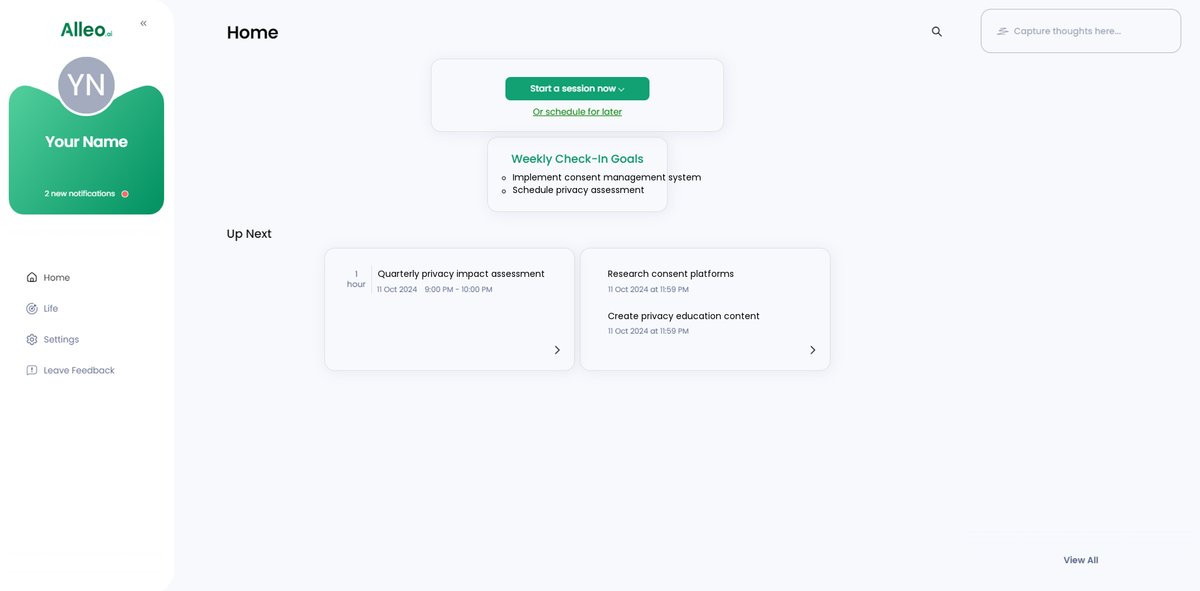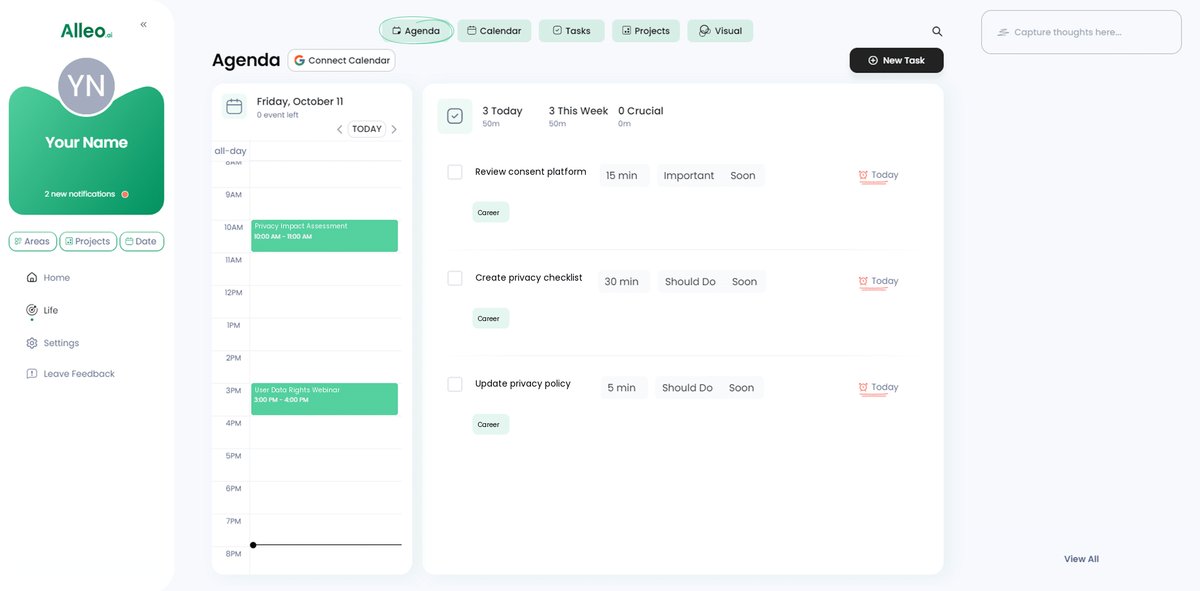The Ultimate Guide to Balancing Data Compliance and User Engagement for Tech Managers
Imagine a world where balancing data compliance and user engagement isn’t a burden but a seamless part of your strategy.
As a tech manager, balancing data compliance with user engagement can feel overwhelming in the face of evolving data privacy regulations. In my experience helping clients navigate digital trust building and GDPR compliance strategies, I’ve seen these challenges firsthand.
In this article, you’ll discover strategies to maintain compliance while enhancing user experience optimization. We’ll cover unified consent management platforms, privacy impact assessments, and user education on customer data protection.
Let’s dive into tech management best practices for balancing data compliance and user engagement!
The Double-Edged Sword of Data Compliance and User Engagement
Balancing data compliance and user engagement is no small feat. Many clients initially struggle with the fear of legal repercussions and the potential loss of user trust when implementing GDPR compliance strategies.
Evolving data privacy regulations demand swift adaptation from tech managers. Failure to comply with user-centric data policies can lead to significant fines and damage to your brand’s reputation, affecting digital trust building.
The stakes are high. You must navigate complex rules without compromising user experience optimization and personalization vs privacy concerns.
In my experience, people often find these challenges overwhelming. However, addressing them proactively through effective data governance frameworks and consent management platforms is crucial for long-term success in balancing data compliance and user engagement.
Strategic Roadmap to Balancing Data Compliance and User Engagement
Overcoming this challenge requires a few key steps. Here are the main areas to focus on to make progress in balancing data compliance and user engagement:
- Implement a unified consent management system: Integrate a robust consent management platform that fits your tech stack and ensures seamless data compliance while optimizing user experience.
- Conduct regular privacy impact assessments: Schedule and perform quarterly assessments using standardized tools to identify and address privacy risks promptly, aligning with GDPR compliance strategies and data governance frameworks.
- Educate users on data rights and preferences: Create engaging content and host interactive sessions to inform users about their data rights, privacy preferences, and your commitment to customer data protection, thereby building digital trust.
Let’s dive into these strategies for balancing data compliance and user engagement!
1: Implement a unified consent management system
Implementing a unified consent management system is crucial for balancing data compliance and user engagement while enhancing user trust.
Actionable Steps:
- Identify and integrate a robust consent management platform. Research various platforms and select one that fits your tech stack and supports GDPR compliance strategies.
- Ensure seamless integration with existing systems. Conduct a pilot test to identify and address integration challenges, focusing on user experience optimization.
- Regularly update and review consent preferences. Set up a bi-monthly review process to ensure compliance with new data privacy regulations.
Key benefits of a unified consent management system include:
- Streamlined compliance across multiple platforms
- Improved user experience and digital trust building
- Reduced legal risks and potential fines
Explanation:
These steps matter because they help you manage user consent efficiently and stay compliant with evolving privacy laws while balancing data compliance and user engagement.
According to a OneTrust infographic, integrating consent management with your tech stack can significantly improve compliance and user experience.
Staying proactive in managing consent helps build trust and reduces legal risks, aligning with user-centric data policies.
By following these steps, you can create a solid foundation for data compliance while maintaining user engagement and implementing effective customer data protection measures.
Next, let’s explore how to conduct regular privacy impact assessments as part of your data governance framework.

2: Conduct regular privacy impact assessments
Conducting regular privacy impact assessments is essential for balancing data compliance and user engagement while staying ahead of privacy risks and ensuring compliance.
Actionable Steps:
- Schedule quarterly privacy impact assessments. Set up calendar reminders and assign a dedicated team for these evaluations, focusing on GDPR compliance strategies.
- Use standardized tools and checklists. Employ industry-standard templates to guarantee thorough and consistent assessments, incorporating data governance frameworks.
- Address findings promptly and transparently. Develop a corrective action plan and keep stakeholders informed of any changes, adhering to user-centric data policies.
Explanation:
These steps help proactively identify and mitigate privacy risks, ensuring compliance and boosting user trust while optimizing user experience.
According to a Digital Balance article, using standardized tools can streamline compliance efforts and enhance data security. This proactive approach is key to maintaining a positive user experience and avoiding legal issues while balancing data compliance and user engagement.
Common areas to focus on during privacy impact assessments:
- Data collection and storage practices aligned with data privacy regulations
- Third-party data sharing agreements and customer data protection
- User consent mechanisms and transparency, utilizing consent management platforms
Moving forward, we’ll explore the importance of user education on data rights and preferences, further supporting digital trust building.

3: Educate users on data rights and preferences
Educating users on their data rights and preferences is essential for building trust and promoting transparency while balancing data compliance and user engagement.
Actionable Steps:
- Create engaging educational content on data privacy. Develop short, informative videos to help users understand their data rights and preferences, focusing on GDPR compliance strategies and customer data protection.
- Host interactive webinars and Q&A sessions. Schedule monthly webinars where users can ask questions and learn more about their data rights, emphasizing digital trust building and user-centric data policies.
- Provide clear and accessible privacy policies. Simplify privacy policies and make them easily accessible on your website, incorporating consent management platforms and data governance frameworks.
Explanation:
These steps matter because they empower users to make informed decisions about their data. Transparency in data collection and use is critical to building customer trust and preventing misuse of information while optimizing user experience.
According to a University of the Cumberlands article, prioritizing user consent and data privacy is becoming increasingly important. Proactive education helps maintain user trust and ensures compliance with data privacy regulations.
Effective ways to engage users in data privacy education while balancing data compliance and user engagement:
- Gamified learning experiences
- Regular privacy tip newsletters
- In-app notifications about data usage
By educating users, you foster a culture of transparency and trust. Now, let’s explore how Alleo can assist in this process of balancing data compliance and user engagement.
Partner with Alleo for Seamless Data Compliance and User Engagement
We’ve explored the challenges of balancing data compliance and user engagement. Did you know you can work directly with Alleo to make this journey easier and faster while adhering to data privacy regulations?
Setting up an Alleo account is quick and easy. Start by creating a personalized plan tailored to your needs, incorporating user-centric data policies and GDPR compliance strategies.
Our AI coach provides affordable, tailored coaching support for balancing data compliance and user engagement. Just like a human coach, Alleo offers full coaching sessions, follow-up on progress, and accountability via text and push notifications, helping you optimize user experience while maintaining customer data protection.
Ready to get started for free? Let me show you how to implement tech management best practices for digital trust building!
Step 1: Logging in or Creating an Account
To start your journey towards balanced data compliance and user engagement, Log in to your account or create a new one to access Alleo’s AI coach and personalized guidance.

Step 2: Choose “Building better habits and routines”
Select “Building better habits and routines” to establish a consistent approach to data compliance and user engagement, helping you create a sustainable framework for managing privacy concerns and fostering user trust.

Step 3: Select “Career” as Your Focus Area
Choose “Career” as your focus area to align your data compliance and user engagement strategies with your professional goals, helping you navigate the complexities of privacy regulations while enhancing your career prospects in the tech industry.

Step 4: Starting a coaching session
Begin your journey with Alleo by scheduling an initial intake session, where our AI coach will help you create a personalized plan to balance data compliance and user engagement strategies.

Step 5: Viewing and managing goals after the session
After your coaching session, check the Alleo app’s home page to view and manage the goals you discussed, ensuring you stay on track with your data compliance and user engagement strategies.

Step 6: Adding events to your calendar or app
Easily track your progress in balancing data compliance and user engagement by adding key events, such as quarterly privacy impact assessments and user education webinars, to your calendar or app, allowing you to stay organized and accountable throughout your journey.

Bringing It All Together: Your Path to Balanced Data Compliance and User Engagement
Balancing data compliance and user engagement is challenging but achievable. By implementing unified consent management platforms, conducting regular privacy assessments, and educating users on data governance frameworks, you can navigate these complexities effectively while optimizing user experience.
Remember, these steps are not just about GDPR compliance strategies—they’re about building digital trust and fostering transparency in your user-centric data policies.
You don’t have to do it alone. Alleo is here to help you streamline this process and achieve your goals in balancing data compliance and user engagement.
Empower your team and enhance user trust today. Try Alleo for free and see the difference it makes in your data compliance journey, from customer data protection to personalization vs privacy considerations.